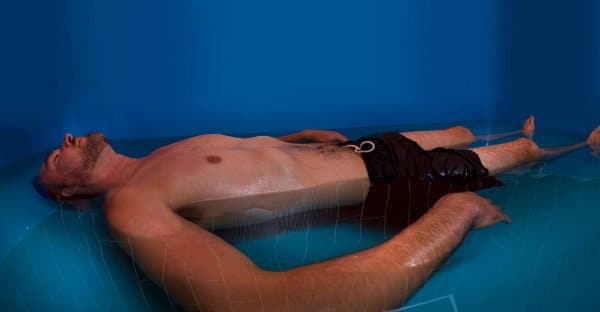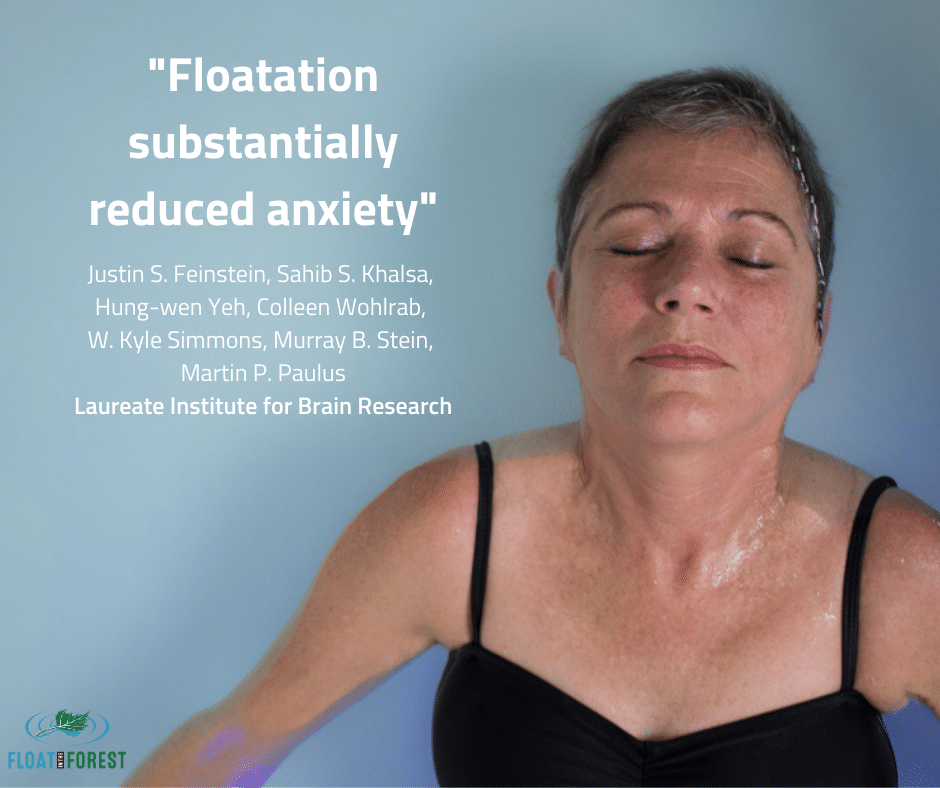Floating brings deep relaxation and stress relief
Relaxation is essential to our physical and mental health. When you relax, you can enjoy life.Floating for stress relief
Our evolutionary inheritance
Stress. Anxiety. Fear.
Sometimes these are useful and appropriate states. They involve powerful physiological reactions which allowed our ancestors to survive and reproduce. When they were threatened by a predator, or had to fight for food or a mate, the stress reaction enabled them to perform the physical feats necessary to escape or to win.

When there was a lot of rapid change going on in our ancestor’s environment, it was usually a survival situation, such as being pursued by a predator, during a hunt, or during a fight.
Rejection from the tribe used to mean death. Losing the support of the group to find resources, to provide protection from predators, or to stand by your side in a fight was a real threat to your survival.
We live in more civilised times
Thankfully, for most of us these days such survival threats don’t arise very often.
However the thing is, we have inherited these states. We have the same physiology. What were evolutionary benefits are now rarely necessary or useful, and furthermore can have a negative impact on our quality of life.
Many of us have hooked the stress reaction into situations where it is not appropriate, even situations which are common in our modern life. Consequently we live in an ongoing state of emergency. We are stuck in a cycle and many of us need stress relief.

Physiological reaction to stress
Stress causes the brain to release hormones like cortisol and adrenalin, as if a sabre-tooth tiger is coming to eat us. This increases muscular tension, especially around the neck and shoulders, often resulting in us lifting the rib cage and breathing with the upper chest.
In the days of our ancestors, this could give the extra oxygen boost needed to escape the tiger. When the tiger was gone and the threat had passed, the shoulders would drop, the breathing would return to the abdomen and diaphragm, the hormone levels would return to normal, and the stress would fade away.
The problem for us today is that there is no tiger, so it can’t go away. The stress cycle is perpetual.

Modern day stresses
Instead of a tiger, it can be getting the kids off to school on time, making sure that the work is done by the deadline, getting stuck in traffic, and so many other parts of every day life.
None of these are any threat to our survival, but ultimately we have learned to respond to them physiologically as if they are.

Demands on our attention
The body responds to interpersonal conflict and rejection as if it is a survival threat. Almost as if an argument with our partner or boss is a physical fight. Similarly as if the lack of response to a social media post means danger to life.
Life can feel hectic and sometimes overwhelming, full of demands upon our time and attention. There’s a rapidly changing stream of sensory input from TV advertising, smart phones, status updates, email, texts, phone calls – you name it. This all keeps us in a state of high alert, so that even in a lull we are keyed-up and anticipating the next ping.
Long story short: it’s almost as if the tiger does not go away.

The risks of stress
So the muscles remain tense, the shoulders stay up, telling the brain that we are in a survival emergency, and so consequently the brain keeps the cortisol and adrenalin flowing.
Heart rate is elevated, blood pressure rises, blood flow is diverted away from the digestive system and to the trunk muscles, breathing becomes more rapid, muscles become tense, body temperature rises, oxygen consumption increases. This is the sympathetic nervous response, more commonly known as the fight-or-flight response.
When we are stressed we often act impulsively, our physiological state preventing us from making the best choices. Stress is also associated with greater risk of depression, anxiety, hypertension, heart disease, stroke and infectious diseases. It can exacerbate rheumatoid arthritis, cancer and multiple sclerosis.
But perhaps just as importantly, it simply isn’t much fun feeling stressed.
Above all, we need to chill out.

Floatation can bring deep relaxation and profound stress relief.
Your muscles release tensions, anxiety dissolves, your mind can switch off, and calm is yours to embrace.
The good news is we can break the stress cycle
Floatation is the ultimate in relaxation and stress relief. You float effortlessly in warm salty water, a bit like the Dead sea. It gives a feeling of weightlessness. The distractions of sound and light are minimised. Above all, your muscles relax, and your mind can finally switch off. This is a place you can truly rest, a time which is yours alone.

Floating activates the parasympathetic response
The floatation environment activates the parasympathetic response – in other words, a physiological reaction of deep relaxation. The parasympathetic response is as striking as that of flight-or-fight, rather with the opposite effects. Muscle tensions dissolve. The heart rate and breathing slow. Levels of cortisol and adrenalin drop off. Circulation improves throughout the body. Blood pressure decreases. Stress melts away.
The effect of stress relief has been shown to persist for days after floating.

Research on floating for anxiety
Dr. Justin Feinstein has re-invigorated modern float research.
As Clinical Neuropsychologist and Director of the Float Clinic and Research Center at the Laureate Institute for Brain Research (LIBR), he and his team have been working on some exciting research into the benefits of floating for anxiety and in combatting the stressful effects of our ‘always on’ culture.
Find out more in this blog about the research on floating for anxiety.
It’s well worth investing 15 minutes of your life to discover the startling empirical evidence for the benefits of floating in this Ted Talk.
A place you can truly rest
Cumulative benefits
Even more significantly, regular floating has cumulative benefits.
By floating regularly you can re-train your body, and raise the threshold for activation of the stress response. A study by Turner and Fine at the Medical College of Ohio concluded that floating “could alter the set points in the endocrine homoeostatic mechanism so that the individual would be experiencing a lower adrenal activation state.”

Ongoing benefits
This means that you are able to remain relaxed in situations which previously triggered stress.
In this way, the feelings of bliss and well-being can carry on beyond the float and into your life.
Imagine ongoing stress relief.

Give yourself, and those you care about, a break. Go for a float.
You might also be interested to read these blog posts on the subject of mental health and stress relief:

Serenity that lasts for days
Scientific research shows floating reduces anxiety and depression Running the float centre we have the privilege of witnessing the wonderful benefits of floatation on a daily basis, and it's great to see the body of scientific research confirming these benefits...

Book Review: Floating in Quiet Darkness
Book review: Floating in Quiet Darkness by Lee and Glenn Perry How the Floatation Tank has changed our lives and is changing the world This book will be enjoyed and valued by many, not only those with an interest in floatation. For everyone loves a good story, and...




